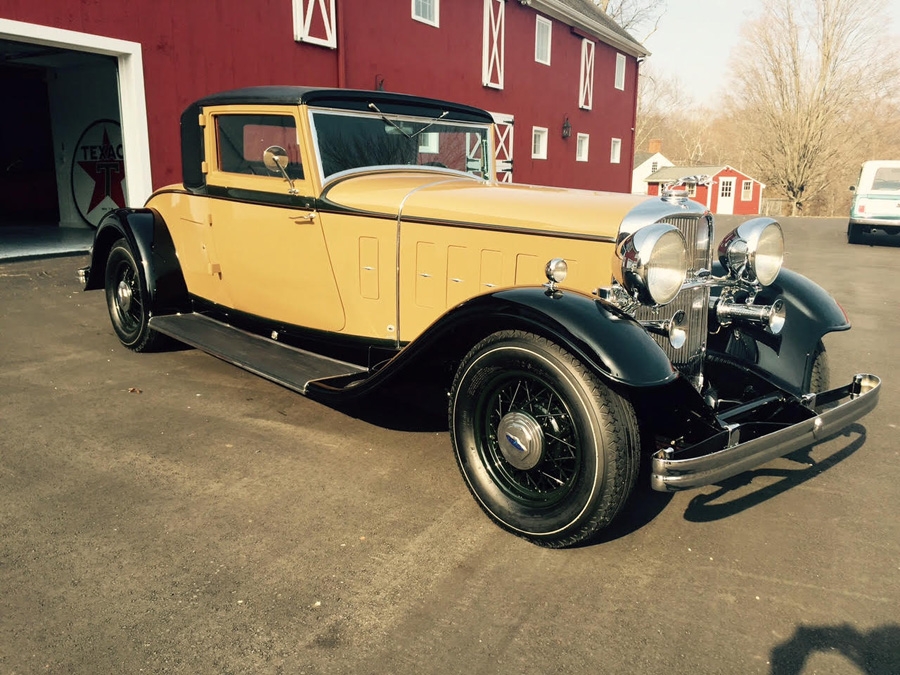SCM Analysis
Detailing
| Vehicle: | 1932 Lincoln KB Judkins coupe |
| Years Produced: | 1932–34 |
| Number Produced: | Fewer than 30 |
| Original List Price: | $5,100 |
| SCM Valuation: | Median to date, $147,125; high sale, $198,000 |
| Tune Up Cost: | $350 |
| Distributor Caps: | $125 |
| Chassis Number Location: | Left side of crankcase below first cylinder |
| Club Info: | Horseless Carriage Foundation |
| Website: | www.hcfi.org |
| Alternatives: | 1932 Packard Twin-Six, 1932 Cadillac 320B V12, 1932 Stutz DV-32 |
| Investment Grade: | B |
This car, Lot 126, sold for $198,000, including buyer’s premium, at The Finest Automobile Auctions’ sale on June 11, 2016, in Hershey, PA.
If you wish to start a spirited discussion, simply mention to a Cadillac guy that Henry Leland left Cadillac to form Lincoln so he could build a better car.
Well, the statement does have a thread of truth. Henry Leland was one of the co-founders of Cadillac, which was started in 1902 at the site of the failed Henry Ford Company. He managed the company, along with his son Wilfred, after it was acquired by General Motors in 1908. Both resigned in 1917 after an argument with Billy Durant and founded the Lincoln Motor Company. Leland named the company after his favorite president and quickly got to producing Liberty engines, as he’d already received a $10 million advance from the federal government to do so.
From war to luxury
As the war ended and the government canceled their irrevocable contract, Leland found himself looking at an empty factory, 6,000 employees and mounting debt due to IRS liens. He turned to what he knew best: manufacturing luxury automobiles.
The first Lincoln was completed in September 1920. The car was brilliantly engineered but had a lackluster and outdated design. Because of Leland’s tending to the most minor of details, the cars were late to market, and after 17 months, just 3,400 had been sold.
Due to a struggling economy and additional tax liens, the company was placed in receivership on November 8, 1921. In February of the following year, the Ford Motor Company purchased Lincoln from the receiver for $8 million: the amount of their liabilities. Henry Ford promised Leland continued control of the company but quickly began demolishing his executive office, and on June 22, 1922, demanded the Lelands’ resignations. By one account, Henry Leland was carried out to the street in his office chair.
Ford’s custom-bodied era
Edsel Ford, Henry’s “forgotten son” was installed as the new president. The senior Ford paid little attention to Lincoln, and Edsel was able to continue the Lelands’ exceptional engineering while acquiring designs from the leading coachbuilders of the era.
The first Ford-engineered Lincoln, the Model K — so named simply because that’s what Edsel decided — appeared in 1931. Cadillac had stunned the automotive world a year earlier when they introduced the V16, quickly followed by the V12. At least seven marques responded with V12 offerings, including Lincoln.
Lincoln’s V12 was the KB, which was rated at 150 horsepower and rode on a 145-inch wheelbase. Edsel Ford encouraged coachbuilders to work their magic, and splendid custom and “catalog-custom” offerings followed from Brunn, Waterhouse, Dietrich, Judkins and others.
The J.B. Judkins Company was the most prolific designer and featured sharper lines and a fabric-covered roof. The cars were priced at $5,100 when fitted with a trunk and $5,350 with a rumbleseat. It is uncertain how many were built in 1932. One source states six, another 23, and yet another less than 30.
Unique subject
The 1932 Lincoln KB Judkins coupe sold by The Finest is unique in that it is the only one known with a rear-mounted spare rather than sidemounts. It is also unique in that it was featured in an episode of Wayne Carini’s highly rated “Chasing Classic Cars,” which aired in June of this year. The show documented Carini locating the car in a collection in Illinois and sending it to his shop in Connecticut, where his team returned it to good running order and repainted the fenders and moldings black.
Carini presented the Lincoln at Bonhams’ Scottsdale 2016 auction, but it failed to sell when the final bid of $180,000 did not meet his expectations. This attractive Lincoln was again offered at The Finest Automobile Auctions six months later and sold for a very similar amount when the fees are factored in.
A couple of factors were at play here: Dealers need to move their inventory, and closed Lincolns are a tough sell. Few have sold for north of $200,000, so while Carini may have done a bit better the third time around, the car would have been “shop worn” and overexposed to the market if it did not sell. So, considering that, I think he made the prudent decision here, and the new owner has a very desirable one-off Lincoln acquired at a fair price. Well bought and sold.
(Introductory description courtesy of The Finest Automobile Auctions.)
